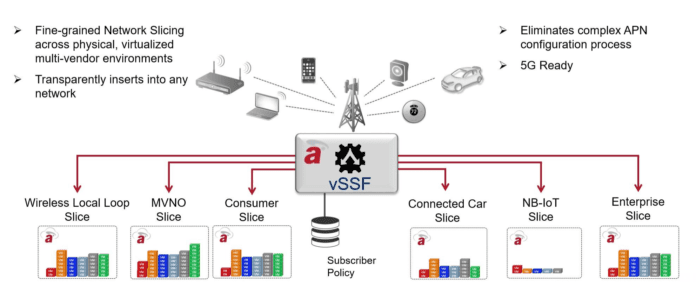5G systems are expected to be built in a way to enable logical network slices, which will allow telecom operators to provide networks on an as-a-service basis and meet the wide range of use cases that the 2020 timeframe is expected to demand. In a single 5G system, network slicing technology can provide connectivity for smart meters with a network slice that connects “internet of things” devices with a high availability and high reliability data-only service, with a given latency, data rate and security level. At the same time, the technology can provide another network slice with very high throughput, high data speeds and low latency for an augmented reality service.
With network slicing technology, a single physical network can be partitioned into multiple virtual networks allowing the operator to offer optimal support for different types of services for different types of customer segments. The key benefit of network slicing technology is it enables operators to provide networks on an as-a-service basis, which enhances operational efficiency while reducing time-to-market for new services.
And, while network slicing is widely associated with 5G, Affirmed Networks sees no need to wait for 5G to start realizing the efficiencies of network slicing. Affirmed’s Angela Whiteford, vice president of marketing and product management, told RCR Wireless News in an interview, “When you hear other vendors talk about network slicing, they always talk about in the context of 5G, which is valid because when we hit 5G slicing will go all the way to the radio. The reality is operators need slicing right now. They’re spending money to virtualize. They’re trying to deal with the data growth, and they need to monetize new services today. Slicing allows you to match the requirements of the service to the networks that’s delivering the service. All of it is making the cost as tightly aligned with the service requirements.”
To fill this void, Affirmed is offering the Virtual Slice Selection Function (vSSF), which supports network slicing in legacy networks and works in virtualized, multi-vendor network environments. The vSSF tool takes the place of APNs (Access Point Names), which offer some degree of traffic segmentation, albeit in a time-consuming, manual process.
Affirmed says the new tool can segment traffic on the basis of device type, service type, customer identification, location, time “and essentially any other attribute.”
Whiteford said network slicing “is something that operators can absolutely do right now and don’t have to wait two years” for 5G standardization and commercialization. “Operators can truly optimize profitability. We’re delivering you a 5G ready function right now.”

